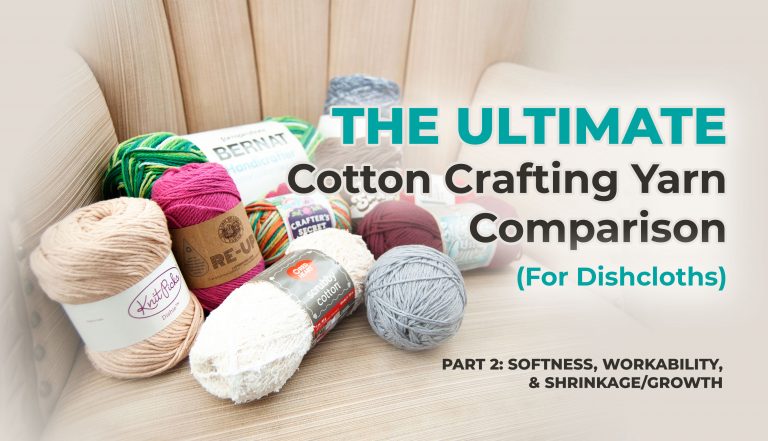 The Ultimate Crafting Cotton Yarn Comparison, Pt. 2
The Ultimate Crafting Cotton Yarn Comparison, Pt. 2The Ultimate Crafting Cotton Yarn Comparison, Pt. 2
Thank you for joining me in the second installment of the Ultimate Cotton (Crafting) Yarn Comparison! It today’s post, we’re going to go over measurements for the dishcloths to determine shrinkage and growth. Additionally, I’ll touch on yarn workability and softness. Buckle up, this might be a long ride!
Not surprisingly, you’ll see that this cotton yarn comparison is taking on a life of it’s own, just as the Ultimate Acrylic Yarn Comparison did! Since the initial post, I have added a new yarn to the comparison. I stumbled upon skeins of Premier Yarns Just Cotton yarn at my local dollar tree and snagged a skein for inclusion. I’m glad I did, because they were all gone when I went back just a week later!
But let’s get down to business and start talking about details. Or you can watch the less detailed version of this post in the YouTube Video below!
First, Comparing Cotton Yarn Softness and Workability
One of the initial premises of similar cotton yarn comparisons was that most cotton yarns are about the same when it comes to softness and workability (with a couple exceptions). While I generally agree with this statement, I want to get a little more detailed.
Obviously, a yarn like Red Heart Scrubby Cotton is going to be the roughest of the bunch. Lion Brand Re-Up, a recycled cotton yarn, is definitely rougher than all the other cotton yarns. Lion Brand 24/7 Cotton has a sleek feel, but not quite soft (at least not until after LOTS of washing). The cotton/poly blend yarns (surprisingly) weren’t any softer than most of the cotton yarns. Bernat Handicrafter and Lily Sugar n’ Cream were very comparable, but the softest of the bunch was Just Cotton (a cotton/poly blend), Crafters Secret, Knit Pick’s Dishie (a tie) and I Love This Cotton coming in at #1. I have placed them from least soft to softest, going left to right in the photo below.
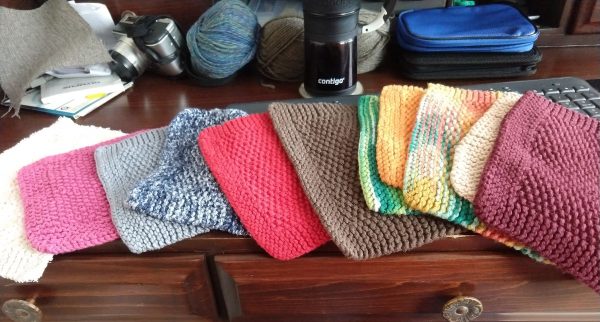
In general, I would say that workability increased with softness. I absolutely hated knitting Red Heart Scrubby Cotton (it’s fine to crochet though). Lion Brand 24/7 Cotton is a bit harder to work. I had a bit more difficulty with Premier Home Cotton, simply because I knit everything on size 8 needles and it was the finest yarn. But otherwise they all worked up similarly, still getting easier with the softness.
Next, Let’s Look at the Measurements
This next part of this cotton yarn comparison is going to get VERY photo heavy, so I apologize in advance. I took measurements both before and after the 1st wash (to determine shrinkage). I then soaked the cloths and stretched them out to determine how much they grow when wet. Then, I performed a final dry to compare to my first shrinkage measurement. These final dry measurements were taken after giving a quick stretch to the cloth, a sort of “dry blocking” to get them to rest on the measuring grid better..
All measurements have about .25″ room for error. These are handmade cloths, 34sts across on one side, 33sts across on the other. They don’t sit square on a mat. I have provided the best size approximation based on these variables, but I present photos for you to make your own determinations.
Each photo in the gallery can be clicked on to view a larger version.

Bernat Handicrafter Cotton before and after the 1st wash. 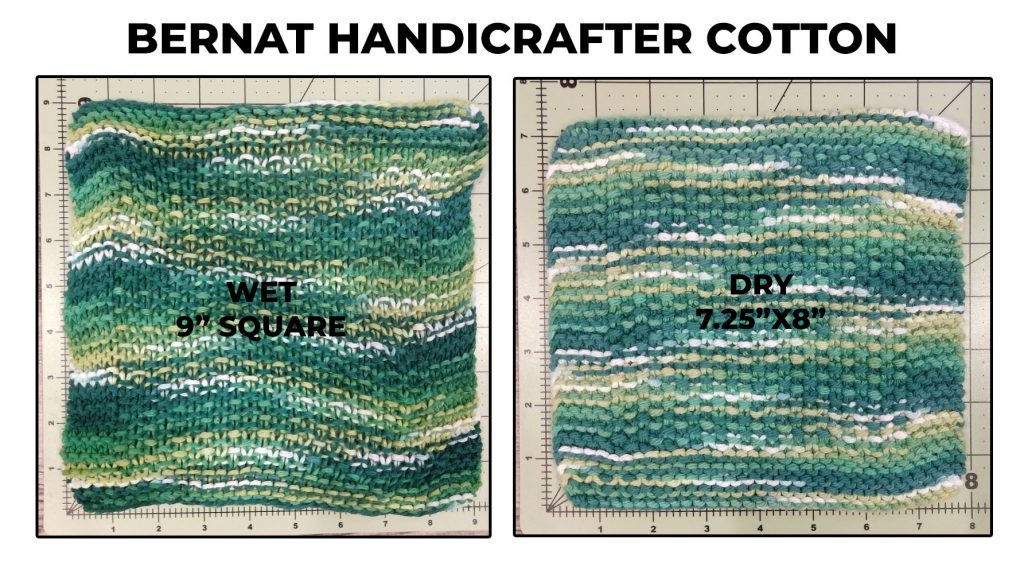
Bernat Handicrafter dishcloth wet vs dry dimensions. 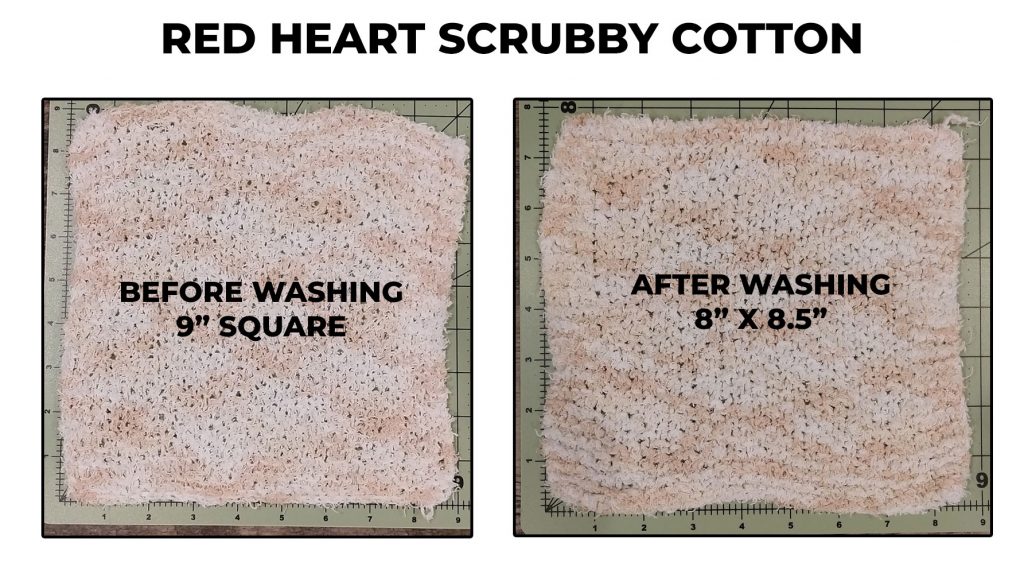
Scrubby Cotton Dishcloth before and after washing the 1st time. 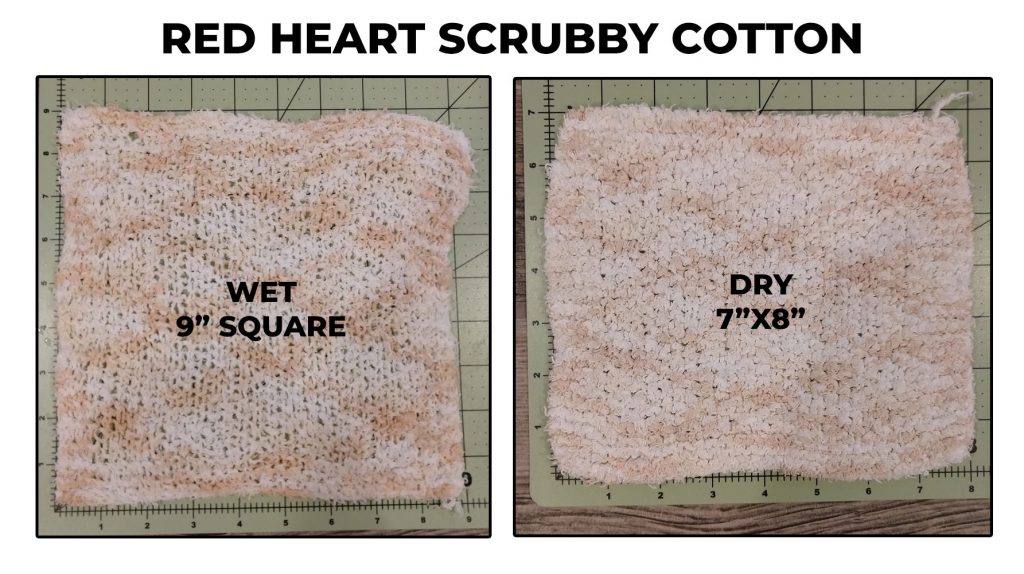
Red Heart Scrubby Cotton dishcloth wet vs dry dimensions. 
Just Cotton before and after washing for the 1st time. 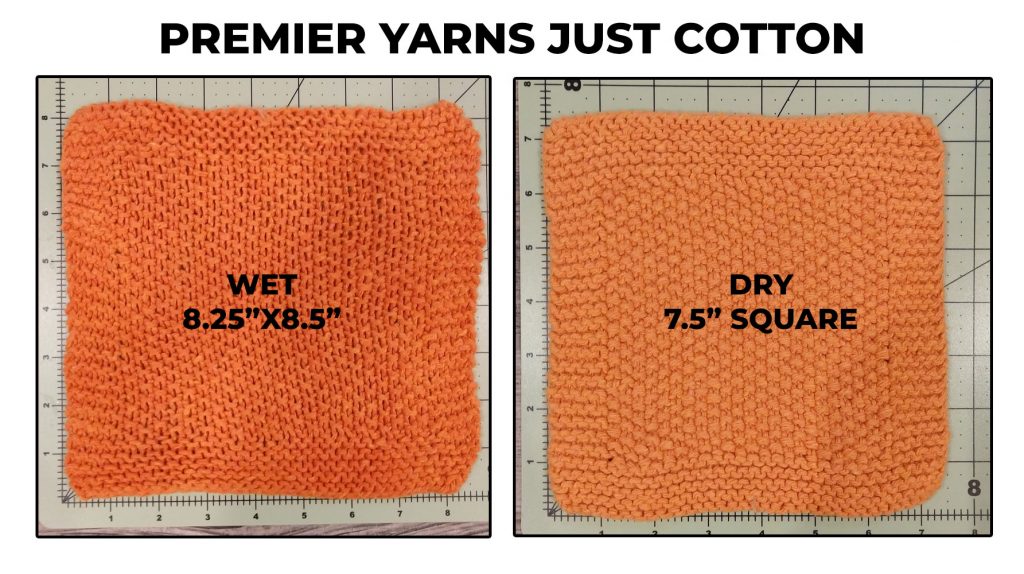
Just Cotton dishcloth wet vs dry dimensions.. 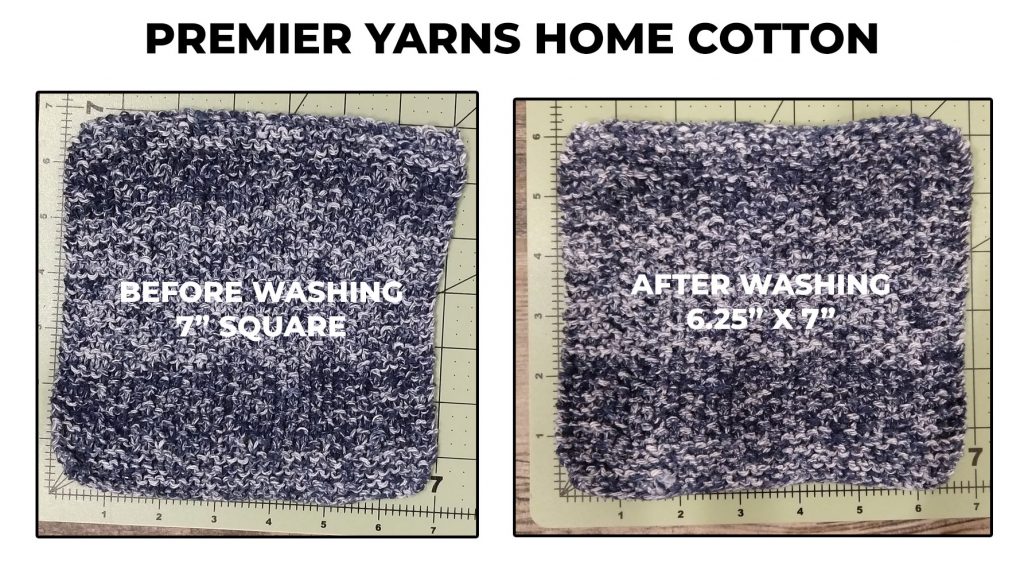
Premier Yarns Home Cotton dischloth before and after washing the 1st time. 
Premier Yarns Home Cotton wet vs dry dimensions. 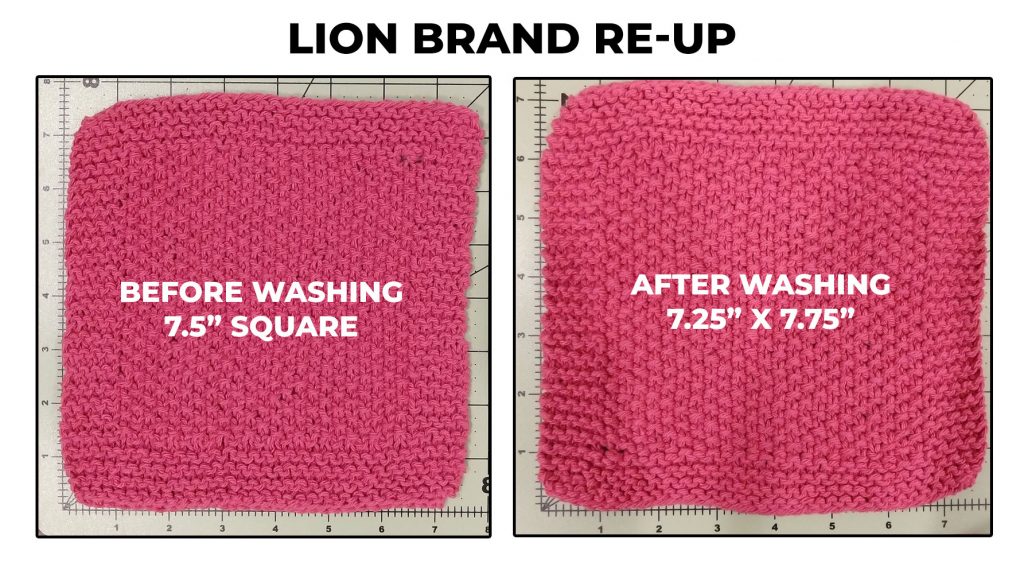
Re-Up before and after the 1st wash. 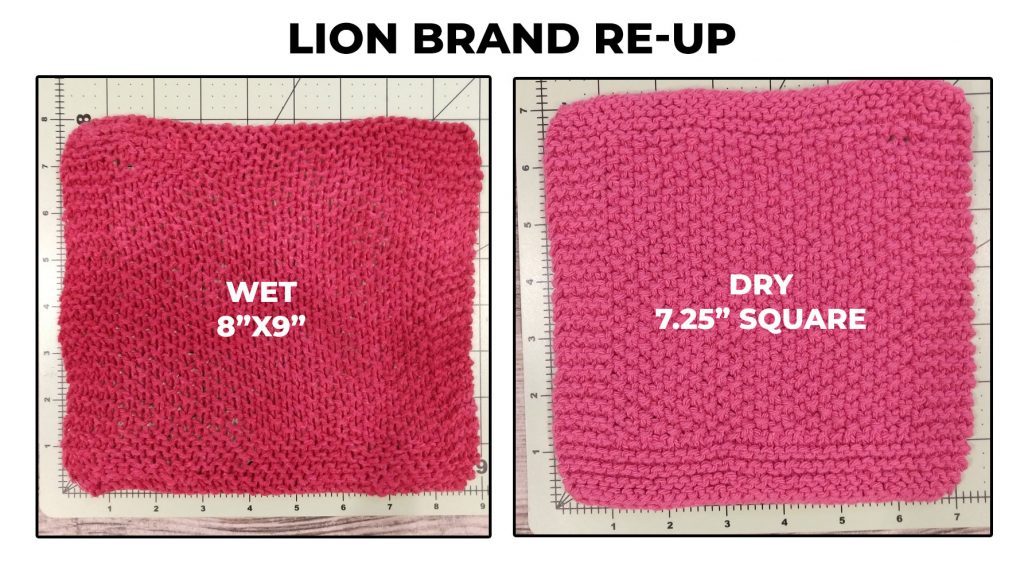
Re-Up wet vs dry dimensions. 
24/7 Cotton before and after the 1st wash. 
24/7 Cotton wet vs dry dimensions. 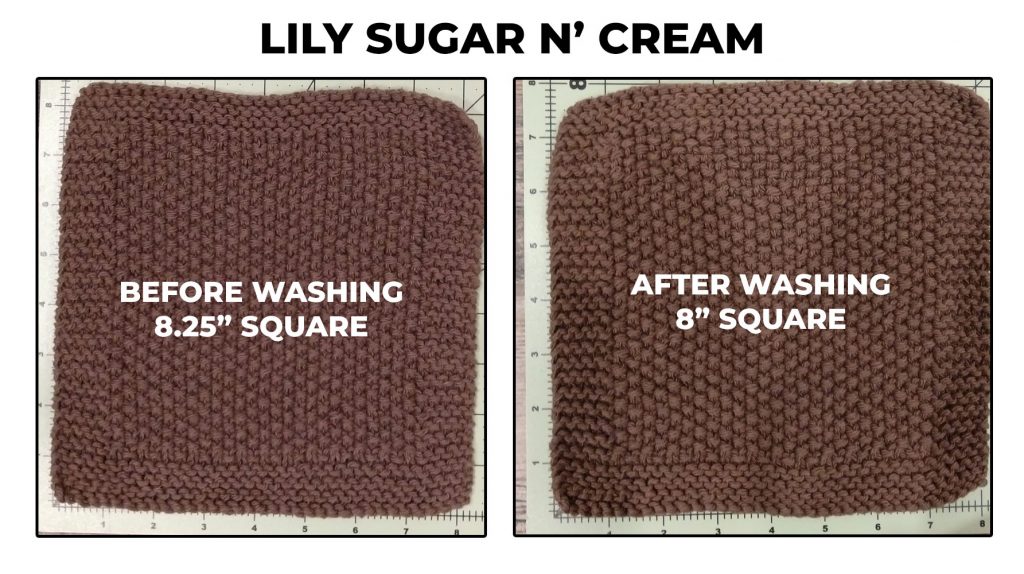
Sugar N’ Cream before and after the 1st wash. 
Sugar n’ Cream wet vs dry dimensions. 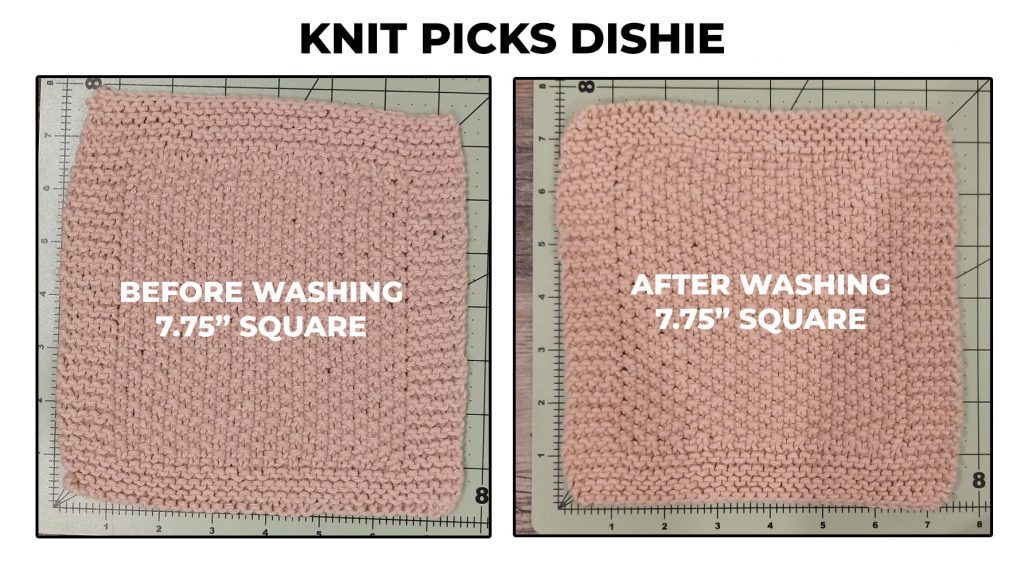
Dishie before and after the 1st wash. 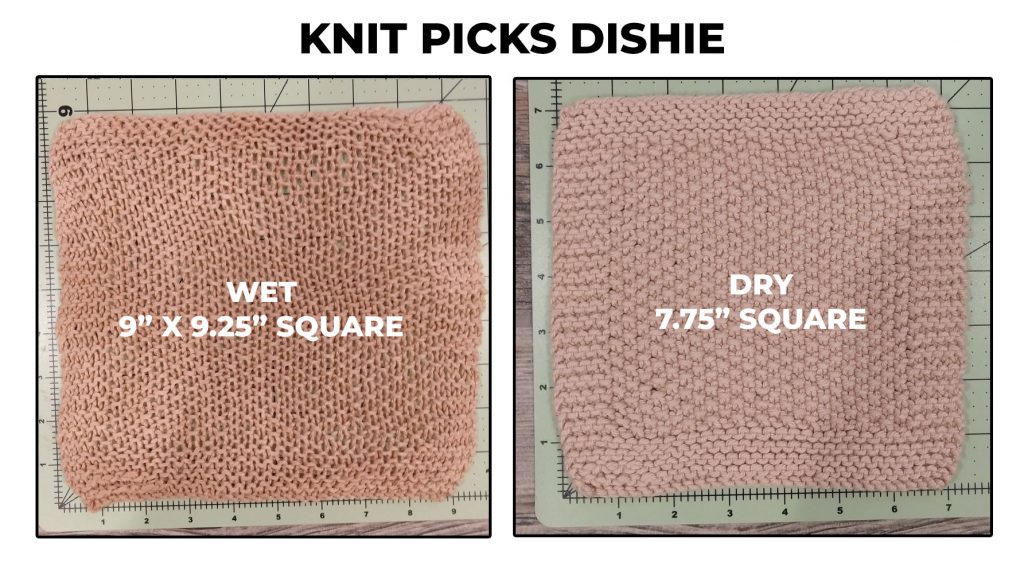
Dishie wet vs dry dimensions. 
I Love This Cotton before and after the 1st wash. 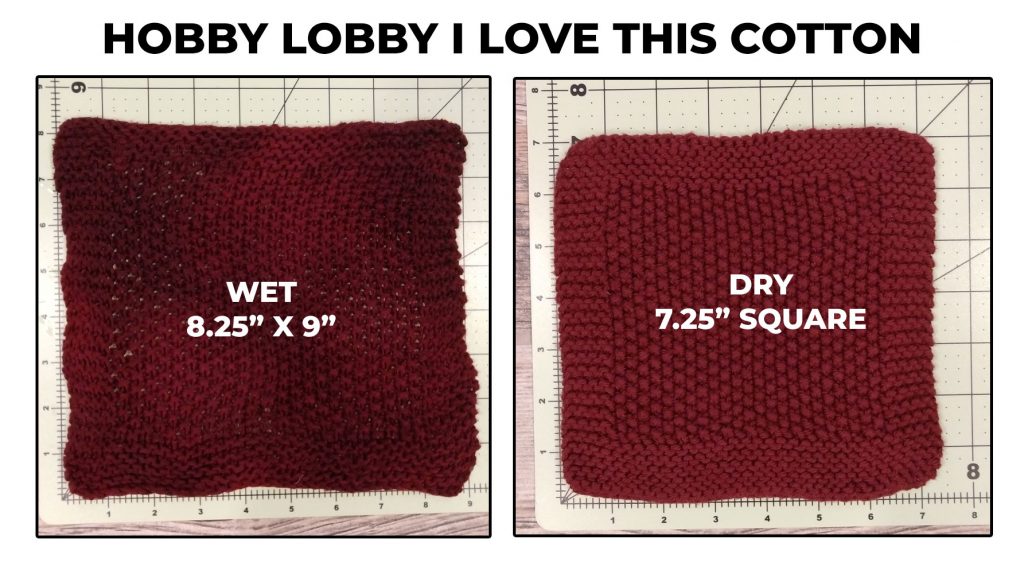
I Love This Cotton wet vs dry dimensions. 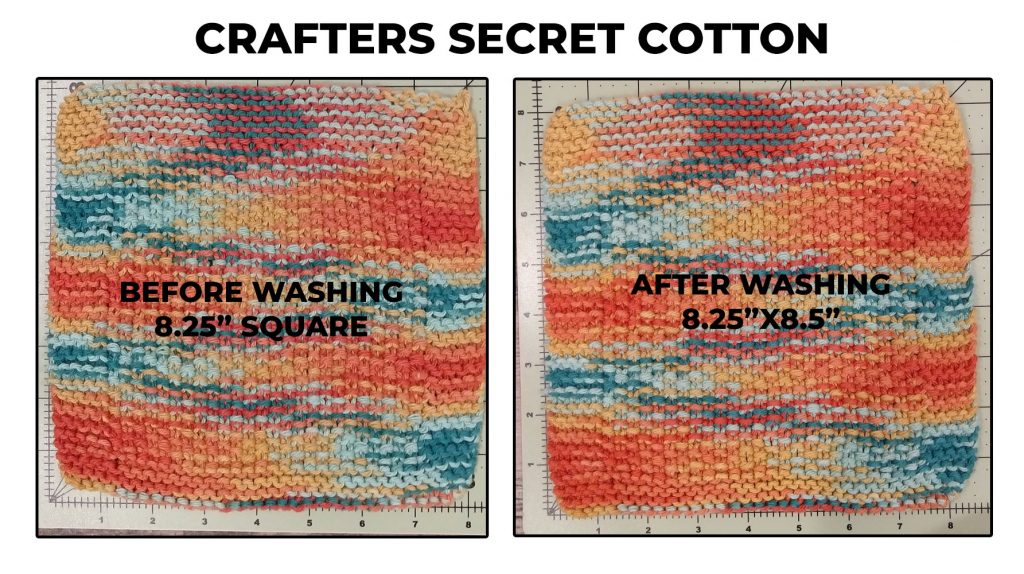
Crafters Secret before and after the 1st wash. 
Crafters Secret Cotton wet vs dry dimensions. 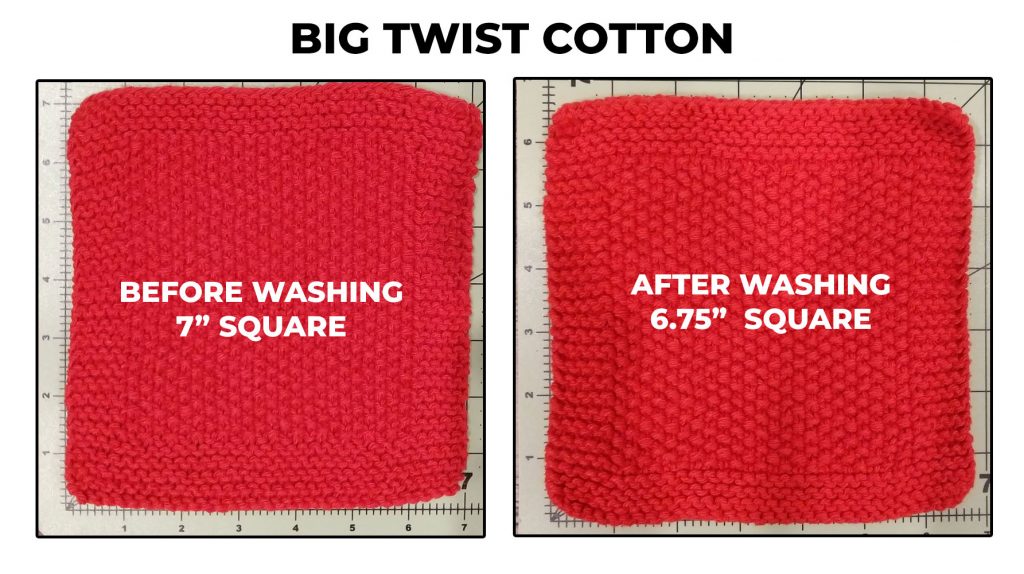
Big Twist Cotton before and after the 1st wash. 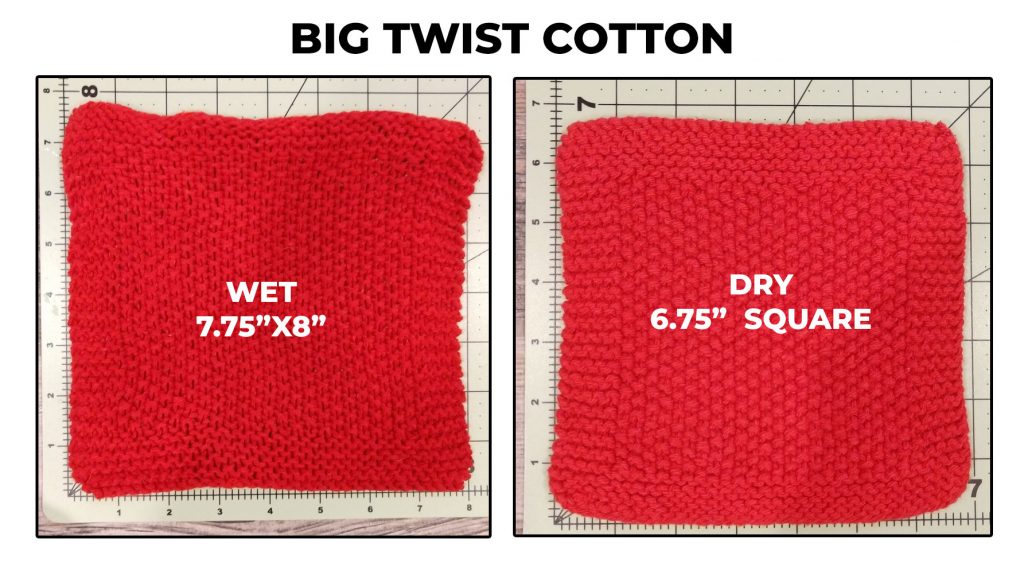
Big Twist Cotton wet vs dry dimensions.
A 5th, but Not Final Measuring
The stack of cloths sat on my desk for several days before I decided to compile my notes on dimensions. In the process, the size of the cloths continued to shift, generally favoring horizontal width over vertical height. The additional manual measurements I took were:
- Handicrafter – 7.25″ x 8″
- 24/7 Cotton – 6″x7″
- Just Cotton – 7.25″ square
- Scrubby Cotton – 6.25″x9″
- Premier Home Cotton – 5.5″x7″
- Re-Up – 6.75″x7.5″
- Big Twist Cotton – 6.5″x7″
- Dishie – 7″x7.5″
- Crafters Secret – 7.5″x8″
- Sugar n’ Cream – 7.5″x 8.25″
- I Love This Cotton – 7″x7.25″
Due to the additional shifting in measurements, I will be regularly checking the dimensions of each cloth after each washing to determine if there is further fluctuation in size. But at this point I feel comfortable saying that in comparison to the original knit dishcloth, there is typically reduction in vertical dimensions without any growth in horizontal dimensions. In the next section, I attempt to summarize the size trends and causes for the variations.
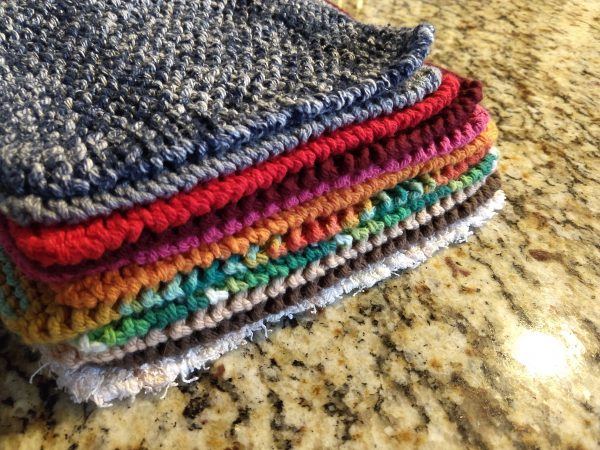
Interpreting the Measurement Data – Shrinkage
First, let me address the overall trends. Most of the dishcloths lose height while maintaining width. Of the 11 yarns, only 3 did not follow this general trend. Knit Pick’s Dishie and Crafter’s Secret Cotton both shrunk horizontally and vertically, in different ratios. Only one yarn shrunk equally on all sides, and that was Premier Just Cotton.
The shrinkage on each cloth was not always consistent between washings. In this case, I would consider that it is possible that I experienced inconsistent drying at each wash. Or, it could be that some yarns continue to shrink even after the first wash. For this reason, I will be doing additional measurements to see how the sizes continue to change, if at all.
It is possible to group the yarns further based on the amount of shrinkage.
- Significant Shrinkage of more than 1″: Scrubby Cotton (3″+). Premier Home Cotton at (1″+).
- Moderate Shrinkage of .5-1″: Re-Up, 24/7 Cotton, Sugar n’ Cream, Handicrafter, Dishie, Crafters Secret, Just Cotton, Big Twist Cotton
- Minimal Shrinkage of less than .5″: I Love This Cotton
When you intersect the groups above with the groups defined by horizontal vs vertical shrinkage, a few yarns begin to separate from the rest. These yarns are Just Cotton, Crafters Secret, Knit Pick’s Dishie, and I Love This Cotton, which also happen to be some of the yarns I called out as being softer and easier to work.
Combine this data with the fact I hated working with Scrubby Cotton (largest variation) and I’ve come to the conclusion workability may actually have an impact on size variation. I think that when a yarn is more difficult to work, it affects my row gauge and makes it impossible to interpret actual shrinkage caused by the yarn itself. The best way to control for this is to do something I don’t really want to do — crochet dishcloths too and compare results.
Did I mention that this comparison is taking on a life of it’s own?
Interpreting the Measurement Data – Growth
The growth measurements are much more straightforward. In general, most of the dishcloths grew back to their original size (pre-washing) or larger when wet. If you take difference in both horizontal and vertical growth and average it, you will find that most of these yarns have an overall growth of 1″ or less.
As an example, Big Twist Cotton started out as 7″ square. It’s dimensions when wet was 7.75″ x 8″. That is .75″ larger on one side, 1″ larger on the other size. If you add these together (1.75″) and divide by two, the average growth is .875″. I think doing these averages is important for comparison because the way knitted cloths can easily stretch in either direction.
When doing these measurements, four yarns take the lead with growth of over 1″ (compared to ORIGINAL size).
- Lily Sugar n’ Cream – .75″ + 1.25″ divided by 2 = 1.125″ growth
- Crafter’s Secret – .75″ + 1.75″ divided by 2 = 1.25″ growth
- Knit Pick’s Dishie – 1.25″ + 1.5″ = 1.375″ growth
- I Love This Cotton – 1″ + 1.75″ divided by 2 = 1.375″ growth
This list again overlaps with yarns that had greater softness and workability. It is possible that this is also a reflection of row tension. But my more interesting theory is that the increased growth when wet may correlate to better absorbency. I’m excited to see how the growth ratio correlates to absorbency, if at all!
What’s Next in the Ultimate Cotton Yarn Comparison
Serious kudos if you made it this far! Before I can continue to the next installment, I need to crochet those wash cloths to help control for knitting related size variations. I also need to continue to monitor the measurements of the existing knit washcloths. From there, I’ll proceed to absorbency testing, and we’ll be in the home stretch!
Have any questions on this massive amount of data? Feel free to leave me a comment on Youtube or ask in the Budget Yarnaholics group on Facebook!